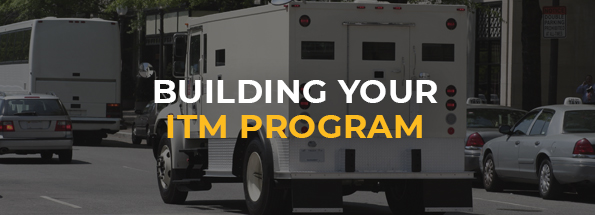How ITMs are Changing the Business of CIT

It was not too long ago that CIT carriers operated armored vehicles with armed guards carrying cash from one brick-and-mortar facility to another. With the introduction of Automated Teller Machines (ATMs) in 1969, the role of carriers changed to increase the carriers’ responsibilities in the distribution of cash to numerous types of facilities and settings.
Over time, changes in regulation, widespread internet and digital networks, and new banking practices led CIT carriers to become active partners in the financial system, specializing in cash management. Cash-in-transit carriers touch every point in the system where cash is in circulation.
This evolution continues today with the increasing adoption of ITMs (Interactive Teller Machines). Like disruptive technologies in many industries, the ITM is built on an interactive platform of digital information traveling over redundant networks. Unlike many disruptive technologies, the ITM continues to depend on physical locations and person-to-person communication. It is a unique combination of digital, human, and location factors that require CIT carriers to adapt to newly complex service requirements.
Adapting to the Greater Capabilities of ITMs
With all ITMs have to offer, they require changes in standard ATM operations by CIT carriers to accommodate the greater variety and sensitivity of transactions. The core uncertainty for an ITM program is that these relatively new machines do not yet have an established niche. Banks and credit unions use them in different ways as they explore and learn how to profit from them, and these variations make it more difficult for carriers to develop routines that can be tested and proven. Coupled with the normal turnover of employees and the difficulty of finding qualified employees, carriers face changing circumstances in a number of ways that make risk management more challenging.
Some specific characteristics of ITMs pose great risks to carriers. Since these machines feature a wider array of services, such as check cashing, they must carry more varieties of cash, including coin. Checks are often written in amounts that require small bills or coins to cash, so the cassettes and coin loaders used are more varied. Documentation of transactions has to be retrieved and secured. And since ITMs offer a cost-effective solution to serve out of the way or rural locations, the protection of eyes on the street may be minimal.
Adapting to a Variety of Banking Models
Bankers sense a big opportunity in ITMs, though the exact nature of the prize is sometimes not quite clear. Basically, they believe the ITM will allow them to replace expensive employees who need to be home with their families with ‘smart’ machines who never tire and do not make mistakes on simple routine transactions. However, the exact way these new machines will fit into a banking system varies.
Some larger banking systems have found themselves with too many retail outlets in some areas where they have acquired other banks. They want to shrink the expensive brick-and-mortar outlets without losing customers. One way to do that is to increase the number of ITMs, depending on customer receptivity. If they can make this work, it could actually increase the number of locations where a bank has a brand presence, but that will make a more difficult route for the carrier.
On the opposite side of the coin, ITMs may offer an alternative to a regular outlet in rural or urban under-served areas. Again, these can make the carriers’ routes and service routines more complicated and time-consuming.
CIT Carriers as the Complete Banking Partner
In order to continue as the all-purpose cash management partner, CIT carriers will need to develop new service routines to match the ITM’s capabilities and to provide the reliable cash controls banks demand.
Download a copy of our latest guide, A CIT Carriers Guide to Building Your ITM Program, to get a full overview of this growing component of cash management.
